
The 2025 Pulitzer Prize-winning books were recently announced on May 5, 2025, for books published in the 2024 calendar year. The Pulitzer Prizes are a series of awards awarded annually by Columbia University for outstanding public service and achievement in American journalism, letters, music, literature, and more. The Pulitzer Prizes began in 1917 when Joseph Pulitzer, a Hungarian-American politician and publisher, left money in his will specifically for the establishment of the Pulitzer Prizes at Columbia University in New York City. Winning a Pulitzer Prize is one of the highest honors in journalism and the arts, and the following winners join a prestigious group of previous awardees. Below, you can check out the 2025 Pulitzer Prize winners and nominees for books from the library's collection. For previous years' winners and nominees, you can search the library catalog. Don't see a book in the search results that you think would make a good addition to the library's collection? You can place a materials request using the Suggest Materials form on the library's website.
Fiction Category
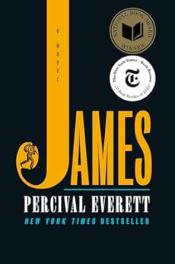
Winner: James by Percival Everett
When Jim overhears that he is about to be sold to a man in New Orleans, separated from his wife and daughter forever, he runs away until he can formulate a plan. Meanwhile, Huck has faked his own death to escape his violent father. As all readers of American literature know, thus begins the dangerous and transcendent journey by raft down the Mississippi River toward the elusive and unreliable promise of the Free States and beyond.
Brimming with the electrifying humor and lacerating observations that have made Everett a literary icon, this brilliant and tender novel radically illuminates Jim’s agency, intelligence, and compassion as never before. James is destined to be a major publishing event and a cornerstone of twenty-first century American literature.
- Fiction Finalists
- Image
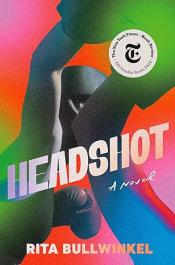
Headshot: A Novel by Rita Bullwinkel
An unexpected tragedy at a community pool. A family’s unrelenting expectation of victory. The desire to gain or lose control; to make time speed up or stop; to be frighteningly, undeniably good at something. Each of the eight teenage girl boxers in this blistering debut novel has her own reasons for the sacrifices she has made to come to Reno, Nevada, to compete to be named the best in the country. Through a series of face-offs that are raw, ecstatic, and punctuated by flashes of humor and tenderness, prizewinning writer Rita Bullwinkel animates the competitors’ pasts and futures as they summon the emotion, imagination, and force of will required to win.
Frenetic, surprising, and strikingly original, Headshot is a portrait of the desire, envy, perfectionism, madness, and sheer physical pleasure that motivate young women to fight—even, and perhaps especially, when no one else is watching.Image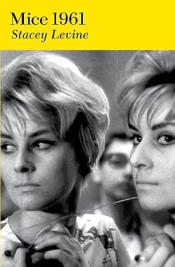
Mice 1961 by Stacey Levine
Stacey Levine's new novel recounts a pivotal day in the fraught relationship of two orphaned sisters through the eyes of their obsessively observant housekeeper, Girtle. Will Jody be able to cope if her younger sibling Mice, subject to constant harassment in their community for her unusual appearance and habits, leaves home? How will their all-watching companion convey her fierce attachment to them both? As a Greek Chorus of neighborhood characters cavort and joke their way through a local party, the sisters and their ardent admirer cross paths with an unsettling stranger--leading to momentous changes for all.
Image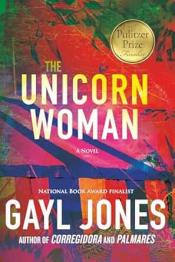
The Unicorn Woman by Gayl Jones
Set in the early 1950s, this latest novel from Pulitzer Prize and National Book Award finalist Gayl Jones follows the witty but perplexing army veteran Buddy Ray Guy as he embodies the fate of Black soldiers who return, not in glory, but into their Jim Crow communities.
A cook and tractor repairman, Buddy was known as Budweiser to his army pals because he’s a wise guy. But underneath that surface, he is a true self-educated intellectual and a classic seeker: looking for religion, looking for meaning, looking for love.
As he moves around the south, from his hometown of Lexington, Kentucky, primarily, to his second home of Memphis, Tennessee, he recalls his love affairs in post-war France and encounters with a variety of colorful characters and mythical prototypes: circus barkers, topiary trimmers, landladies who provide shelter and plenty of advice for their all-Black clientele, proto feminists, and bigots. The lead among these characters is, of course, The Unicorn Woman, who exists, but mostly lives in Bud’s private mythology.
Jones offers a rich, intriguing exploration of Black (and Indigenous) people in a time and place of frustration, disappointment, and spiritual hope.
History Category
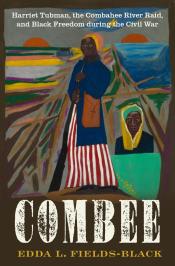
Winner: Combee: Harriet Tubman, the Combahee River Raid, and Black Freedom During the Civil War by Edda L. Fields-Black
Most Americans know of Harriet Tubman's legendary life: escaping enslavement in 1849, she led more than 60 others out of bondage via the Underground Railroad, gave instructions on getting to freedom to scores more, and went on to live a lifetime fighting for change. Yet the many biographies, children's books, and films about Tubman omit a crucial chapter: during the Civil War, hired by the Union Army, she ventured into the heart of slave territory--Beaufort, South Carolina--to live, work, and gather intelligence for a daring raid up the Combahee River to attack the major plantations of Rice Country, the breadbasket of the Confederacy.
Edda L. Fields-Black--herself a descendent of one of the participants in the raid--shows how Tubman commanded a ring of spies, scouts, and pilots and participated in military expeditions behind Confederate lines. On June 2, 1863, Tubman and her crew piloted two regiments of Black US Army soldiers, the Second South Carolina Volunteers, and their white commanders up coastal South Carolina's Combahee River in three gunboats. In a matter of hours, they torched eight rice plantations and liberated 730 people, people whose Lowcountry Creole language and culture Tubman could not even understand. Black men who had liberated themselves from bondage on South Carolina's Sea Island cotton plantations after the Battle of Port Royal in November 1861 enlisted in the Second South Carolina Volunteers and risked their lives in the effort.
Using previous unexamined documents, including Tubman's US Civil War Pension File, bills of sale, wills, marriage settlements, and estate papers from planters' families, Fields-Black brings to life intergenerational, extended enslaved families, neighbors, praise-house members, and sweethearts forced to work in South Carolina's deadly tidal rice swamps, sold, and separated during the antebellum period. When Tubman and the gunboats arrived and blew their steam whistles, many of those people clambered aboard, sailed to freedom, and were eventually reunited with their families. The able-bodied Black men freed in the Combahee River Raid enlisted in the Second South Carolina Volunteers and fought behind Confederate lines for the freedom of others still enslaved not just in South Carolina but Georgia and Florida.
After the war, many returned to the same rice plantations from which they had escaped, purchased land, married, and buried each other. These formerly enslaved peoples on the Sea Island indigo and cotton plantations, together with those in the semi-urban port cities of Charleston, Beaufort, and Savannah, and on rice plantations in the coastal plains, created the distinctly American Gullah Geechee dialect, culture, and identity--perhaps the most significant legacy of Harriet Tubman's Combahee River Raid.
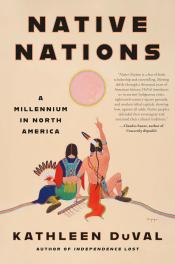
Winner: Native Nations: A Millennium in North America by Kathleen DuVal
Long before the colonization of North America, Indigenous Americans built diverse civilizations and adapted to a changing world in ways that reverberated globally. And, as award-winning historian Kathleen DuVal vividly recounts, when Europeans did arrive, no civilization came to a halt because of a few wandering explorers, even when the strangers came well armed.
A millennium ago, North American cities rivaled urban centers around the world in size. Then, following a period of climate change and instability, numerous smaller nations emerged, moving away from rather than toward urbanization. From this urban past, egalitarian government structures, diplomacy, and complex economies spread across North America. So, when Europeans showed up in the sixteenth century, they encountered societies they did not understand—those having developed differently from their own—and whose power they often underestimated.
For centuries afterward, Indigenous people maintained an upper hand and used Europeans in pursuit of their own interests. In Native Nations, we see how Mohawks closely controlled trade with the Dutch—and influenced global markets—and how Quapaws manipulated French colonists. Power dynamics shifted after the American Revolution, but Indigenous people continued to command much of the continent’s land and resources. Shawnee brothers Tecumseh and Tenskwatawa forged new alliances and encouraged a controversial new definition of Native identity to attempt to wall off U.S. ambitions. The Cherokees created institutions to assert their sovereignty on the global stage, and the Kiowas used their power in the west to regulate the passage of white settlers across their territory.
In this important addition to the growing tradition of North American history centered on Indigenous nations, Kathleen DuVal shows how the definitions of power and means of exerting it shifted over time, but the sovereignty and influence of Native peoples remained a constant—and will continue far into the future.
- History Finalists
- Image
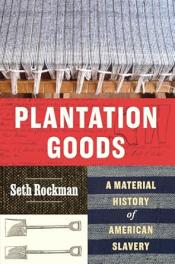
Plantation Goods: A Material History of American Slavery by Seth Rockman
The industrializing North and the agricultural South—that’s how we have been taught to think about the United States in the early nineteenth century. But in doing so, we overlook the economic ties that held the nation together before the Civil War. We miss slavery’s long reach into small New England communities, just as we fail to see the role of Northern manufacturing in shaping the terrain of human bondage in the South. Using plantation goods—the shirts, hats, hoes, shovels, shoes, axes, and whips made in the North for use in the South—historian Seth Rockman locates the biggest stories in American history in the everyday objects that stitched together the lives and livelihoods of Americans—white and Black, male and female, enslaved and free—across an expanding nation.
By following the stories of material objects, such as shoes made by Massachusetts farm women that found their way to the feet of a Mississippi slave, Rockman reveals a national economy organized by slavery—a slavery that outsourced the production of its supplies to the North, and a North that outsourced its slavery to the South. Melding business and labor history through powerful storytelling, Plantation Goods brings northern industrialists, southern slaveholders, enslaved field hands, and paid factory laborers into the same picture. In one part of the country, entrepreneurs envisioned fortunes to be made from “planter’s hoes” and rural women spent their days weaving “negro cloth” and assembling “slave brogans.” In another, enslaved people actively consumed textiles and tools imported from the North to contest their bondage. In between, merchants, marketers, storekeepers, and debt collectors laid claim to the profits of a thriving interregional trade.
Examining producers and consumers linked in economic and moral relationships across great geographic and political distances, Plantation Goods explores how people in the nineteenth century thought about complicity with slavery while showing how slavery structured life nationwide and established a modern world of entrepreneurship and exploitation. Rockman brings together lines of American history that have for too long been told separately, as slavery and capitalism converge in something as deceptively ordinary as a humble pair of shoes.
Biography Category
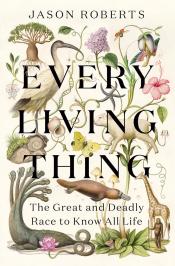
Winner: Every Living Thing: The Great and Deadly Race to Know All Life by Jason Roberts
In the eighteenth century, two men—exact contemporaries and polar opposites—dedicated their lives to the same daunting task: identifying and describing all life on Earth. Carl Linnaeus, a pious Swedish doctor with a huckster’s flair, believed that life belonged in tidy, static categories. Georges-Louis de Buffon, an aristocratic polymath and keeper of France’s royal garden, viewed life as a dynamic swirl of complexities. Each began his task believing it to be difficult but not impossible: How could the planet possibly hold more than a few thousand species—or as many could fit on Noah’s Ark?
Both fell far short of their goal, but in the process they articulated starkly divergent views on nature, the future of the Earth, and humanity itself. Linnaeus gave the world such concepts as mammal, primate, and Homo sapiens, but he also denied that species change and he promulgated racist pseudoscience. Buffon formulated early prototypes of evolution and genetics, warned of global climate change, and argued passionately against prejudice. The clash of their conflicting worldviews continued well after their deaths, as their successors contended for dominance in the emerging science that came to be called biology.
In Every Living Thing, Jason Roberts weaves a sweeping, unforgettable narrative spell, exploring the intertwined lives and legacies of Linnaeus and Buffon—as well as the groundbreaking, often fatal adventures of their acolytes—to trace an arc of insight and discovery that extends across three centuries into the present day.
- Biography Finalists
- Image
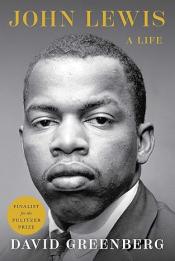
John Lewis: A Life by David Greenberg
Born into poverty in rural Alabama, John Lewis rose to prominence in the civil rights movement, becoming second only to Martin Luther King, Jr. in his contributions. As a Freedom Rider, he played a crucial role in integrating bus stations across the South. Lewis was a prominent leader in the Nashville sit-in movement and delivered a historic speech at the 1963 March on Washington. As the youngest speaker and chairman of the Student Nonviolent Coordinating Committee (SNCC), he transformed it into a major civil rights organization. His legacy endures through the harrowing events at the Edmund Pettus Bridge in Selma, Alabama, where he survived a brutal beating on “Bloody Sunday.”
David Greenberg’s “authoritative…definitive biography” (David J. Garrow, Pulitzer Prize–winning author) follows Lewis’s journey beyond the civil rights era, highlighting his leadership in the Voter Education Project, where he helped enroll millions of African American voters across the South. This book uncovers the little-known story of his ascent in politics, first locally in Atlanta and then as a respected member of Congress. As part of the Democratic leadership, Lewis was admired on both sides of the aisle for his unwavering dedication to nonviolent integration and justice.
Rich with new insights, Greenberg’s work captures John Lewis’s influential career through documents from numerous archives, interviews with 275 people who knew him, and rare footage of Lewis speaking from his hospital bed after Selma. John Lewis offers unparalleled details about his personal and professional relationships and stands as the definitive biography of a man whose heroism during the civil rights movement paved the way for a new era of freedom in America.Image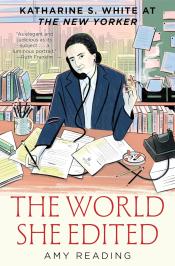
The World She Edited: Katherine S. White at The New Yorker by Amy Reading
In the summer of 1925, Katharine Sergeant Angell White walked into The New Yorker’s midtown office and left with a job as an editor. The magazine was only a few months old. Over the next thirty-six years, White would transform the publication into a literary powerhouse.
This exquisite biography brings to life the remarkable relationships White fostered with her writers and how these relationships nurtured an astonishing array of literary talent. She edited a young John Updike, to whom she sent seventeen rejections before a single acceptance, as well as Vladimir Nabokov, with whom she fought incessantly, urging that he drop needlessly obscure, confusing words.
White’s biggest contribution, however, was her cultivation of women writers whose careers were made at The New Yorker—Janet Flanner, Mary McCarthy, Elizabeth Bishop, Jean Stafford, Nadine Gordimer, Elizabeth Taylor, Emily Hahn, Kay Boyle, and more. She cleared their mental and financial obstacles, introduced them to each other, and helped them create now classic stories and essays. She propelled these women to great literary heights and, in the process, reinvented the role of the editor, transforming the relationship to be not just a way to improve a writer’s work but also their life.
Based on years of scrupulous research, acclaimed author Amy Reading creates a rare and deeply intimate portrait of a prolific editor—through both her incredible tenure at The New Yorker, and her famous marriage to E.B. White—and reveals how she transformed our understanding of literary culture and community.
Memoir or Autobiography Category
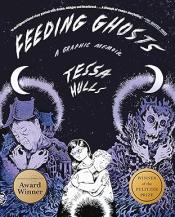
Winner: Feeding Ghosts: A Graphic Memoir by Tessa Hulls
In her acclaimed graphic memoir debut, Tessa Hulls traces the reverberations of Chinese history across three generations of women in her family. Tessa’s grandmother, Sun Yi, was a Shanghai journalist swept up by the turmoil of the 1949 Communist victory. After fleeing to Hong Kong, she wrote a bestselling memoir about her persecution and survival—then promptly had a mental breakdown from which she never recovered.
Growing up with Sun Yi, Tessa watches both her mother and grandmother struggle beneath the weight of unexamined trauma and mental illness, and bolts to the most remote corners of the globe. But once she turns thirty, roaming begins to feel less like freedom and more like running away. Feeding Ghosts is Tessa’s homecoming, a vivid, heartbreaking journey into history that exposes the fear and trauma that haunt generations, and the love that holds them together.
- Memoir or Autobiography Finalists
- Image
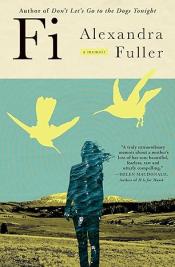
Fi: A Memoir of My Son by Alexandra Fuller
“Fair to say, I was in a ribald state the summer before my fiftieth birthday.” And so begins Alexandra Fuller’s open, vivid new memoir, Fi. It’s midsummer in Wyoming and Alexandra is barely hanging on. Grieving her father and pining for her home country of Zimbabwe, reeling from a midlife breakup, freshly sober and piecing her way uncertainly through a volatile new relationship with a younger woman, Alexandra vows to get herself back on even keel.
And then – suddenly and incomprehensibly - her son Fi, at 21 years old, dies in his sleep.
No stranger to loss - young siblings, a parent, a home country - Alexandra is nonetheless leveled. At the same time, she is painfully aware that she cannot succumb and abandon her two surviving daughters as her mother before her had done. From a sheep wagon deep in the mountains of Wyoming to a grief sanctuary in New Mexico to a silent meditation retreat in Alberta, Canada, Alexandra journeys up and down the spine of the Rocky Mountains in an attempt to find how to grieve herself whole. There is no answer, and there are countless answers – in poetry, in rituals and routines, in nature and in the indigenous wisdom she absorbed as a child in Zimbabwe. By turns disarming, devastating and unexpectedly, blessedly funny, Alexandra recounts the wild medicine of painstakingly grieving a child in a culture that has no instructions for it.
Image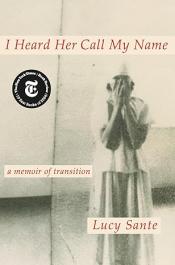
I Heard Her Call My Name: A Memoir of Transition by Lucy Sante
For a long time, Lucy Sante felt unsure of her place. Born in Belgium, the only child of conservative working-class Catholic parents who transplanted their little family to the United States, she felt at home only when she moved to New York City in the early 1970s and found her people among a band of fellow bohemians. Some would die young, from drugs and AIDS, and some would become jarringly famous. Sante flirted with both fates on her way to building an estimable career as a writer. But she still felt like her life was a performance. She was presenting a facade, even to herself.
Sante’s memoir braids together two threads of personal narrative: the arc of her life, and her recent step-by-step transition to a place of inner and outer alignment. Sante brings a loving irony to her account of her unsteady first steps; there was much she found she still needed to learn about being a woman after some sixty years cloaked in a man’s identity, in a man’s world. A marvel of grace and empathy, I Heard Her Call My Name parses with great sensitivity many issues that touch our lives deeply, of gender identity and far beyond.
Poetry Category
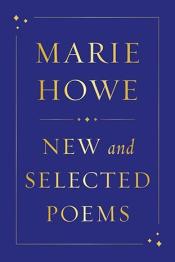
Winner: New and Selected Poems by Marie Howe
Characterized by “a radical simplicity and seriousness of purpose, along with a fearless interest in autobiography and its tragedies and redemptions” (Matthew Zapruder, New York Times Magazine), Marie Howe’s poetry transforms penetrating observations of everyday life into sacred, humane miracles. This essential volume draws from each of Howe’s four previous collections―including What the Living Do (1997), a haunting archive of personal loss, and the National Book Award–longlisted Magdalene (2017), a spiritual and sensual exploration of contemporary womanhood―and contains twenty new poems. Whether speaking in the voice of the goddess Persephone or thinking about aging while walking the dog, Howe is “a light-bearer, an extraordinary poet of our human sorrow and ordinary joy” (Dorianne Laux).
- Poetry Finalists
- Image

An Authentic Life by Jennifer Chang
Sprawling yet urgent, meditative yet lucid, the poems in Jennifer Chang’s anticipated third collection, An Authentic Life, offer a bold examination of a world deeply influenced by war and patriarchy. In dialogues against literature, against philosophy, and against God, Chang interrogates the “fathers” who stand at the center of history. Poems navigate wounds opened by explorations of family and generational trauma, and draw on the author’s experiences as a mother, as the daughter of immigrants, and as a citizen of our deeply divided nation.
Here, the patriarchal violence of history becomes intimate, brought down to a domestic scale. A woman sweeping the floor cannot escape thoughts of war, or her dying mother, while another scene shows friends questioning the “despite-ness” of love. In poems where the lyric is reimagined as porous, discursive, and bursting open, Chang fearlessly confronts the forms of knowledge that hold power. Meticulous and masterful, An Authentic Life creates a world where we can begin “to unlearn everything.”
Image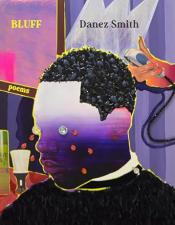
Bluff: Poems by Danez Smith
Written after two years of artistic silence, during which the world came to a halt due to the COVID-19 pandemic and Minneapolis became the epicenter of protest following the murder of George Floyd, Bluff is Danez Smith’s powerful reckoning with their role and responsibility as a poet and with their hometown of the Twin Cities. This is a book of awakening out of violence, guilt, shame, and critical pessimism to wonder and imagine how we can strive toward a new existence in a world that seems to be dissolving into desolate futures.
Smith brings a startling urgency to these poems, their questions demanding a new language, a deep self-scrutiny, and virtuosic textual shapes. A series of ars poetica gives way to “anti poetica” and “ars america” to implicate poetry’s collusions with unchecked capitalism. A photographic collage accrues across a sequence to make clear the consequences of America's acceptance of mass shootings. A brilliant long poem―part map, part annotation, part visual argument―offers the history of Saint Paul’s vibrant Rondo neighborhood before and after officials decided to run an interstate directly through it.
Bluff is a kind of manifesto about artistic resilience, even when time and will can seem fleeting, when the places we most love―those given and made―are burning. In this soaring collection, Smith turns to honesty, hope, rage, and imagination to envision futures that seem possible.
General Nonfiction
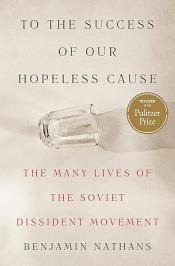
Winner: To the Success of Our Hopeless Cause: The Many Lives of the Soviet Dissident Movement by Benjamin Nathans
Beginning in the 1960s, the Soviet Union was unexpectedly confronted by a dissident movement that captured the world’s imagination. Demanding that the Kremlin obey its own laws, an improbable band of Soviet citizens held unauthorized public gatherings, petitioned in support of arrested intellectuals, and circulated banned samizdat texts. Soviet authorities arrested dissidents, subjected them to bogus trials and vicious press campaigns, sentenced them to psychiatric hospitals and labor camps, sent them into exile—and transformed them into martyred heroes. Against all odds, the dissident movement undermined the Soviet system and hastened its collapse. Taking its title from a toast made at dissident gatherings, To the Success of Our Hopeless Cause is a definitive history of a remarkable group of people who helped change the twentieth century.
Benjamin Nathans’s vivid narrative tells the dramatic story of the men and women who became dissidents—from Nobel laureates Andrei Sakharov and Alexander Solzhenitsyn to many others who are virtually unknown today. Drawing on diaries, memoirs, personal letters, interviews, and KGB interrogation records, To the Success of Our Hopeless Cause reveals how dissidents decided to use Soviet law to contain the power of the Soviet state. This strategy, as one of them put it, was “simple to the point of genius: in an unfree country, they began to conduct themselves like free people.”
An extraordinary account of the Soviet dissident movement, To the Success of Our Hopeless Cause shows how dissidents spearheaded the struggle to break free of the USSR’s totalitarian past, a struggle that continues in Putin’s Russia—and that illuminates other struggles between hopelessness and perseverance today.
- General Nonfiction Finalists
- Image
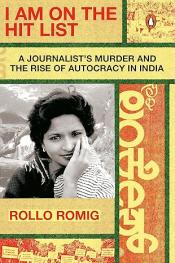
I Am on the Hit List: A Journalist’s Murder and the Rise of Autocracy in India by Rollo Romig
When Gauri Lankesh, an outspoken journalist in the South Indian city of Bangalore, was assassinated in September 2017 outside her home, it wasn’t just a loss to her close-knit community of writers and activists—the shock reverberated nationwide, making headlines and sparking mass protests. Why was she targeted, and who was behind it? Following the case to its stunning, unsettling conclusion, Rollo Romig uncovers a world of political extremists, fearless writers, organized crime, and shadowy religious groups. I Am on the Hit List is an epic narrative that moves between a historic booksellers' district and brand-new high rises funded by IT wealth, to a secretive ashram in Goa and the kitchens of an international vegetarian restaurant chain, boldly interrogating whether we can break the cycle of polarization and bloodshed inspiring political murder across the globe.
Image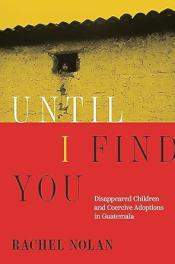
Until I Find You: Disappeared Children and Coercive Adoptions in Guatemala by Rachel Nolan
In 2009 Dolores Preat went to a small Maya town in Guatemala to find her birth mother. At the address retrieved from her adoption file, she was told that her supposed mother, one Rosario Colop Chim, never gave up a child for adoption—but in 1984 a girl across the street was abducted. At that house, Preat met a woman who strongly resembled her. Colop Chim, it turned out, was not Preat’s mother at all, but a jaladora—a baby broker.
Some 40,000 children, many Indigenous, were kidnapped or otherwise coercively parted from families scarred by Guatemala’s civil war or made desperate by unrelenting poverty. Amid the US-backed army’s genocide against Indigenous Maya, children were wrested from their villages and put up for adoption illegally, mostly in the United States. During the war’s second decade, adoption was privatized, overseen by lawyers who made good money matching children to overseas families. Private adoptions skyrocketed to the point where tiny Guatemala overtook giants like China and Russia as a “sender” state. Drawing on government archives, oral histories, and a rare cache of adoption files opened briefly for war crimes investigations, Rachel Nolan explores the human toll of an international industry that thrives on exploitation.
Would-be parents in rich countries have fostered a commercial market for children from poor countries, with Guatemala becoming the most extreme case. Until I Find You reckons with the hard truths of a practice that builds loving families in the Global North out of economic exploitation, endemic violence, and dislocation in the Global South.
Descriptions adapted from the publisher